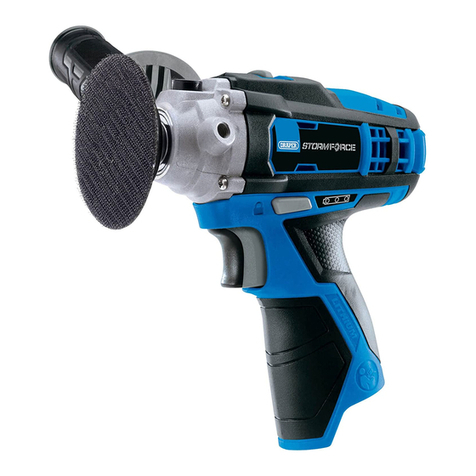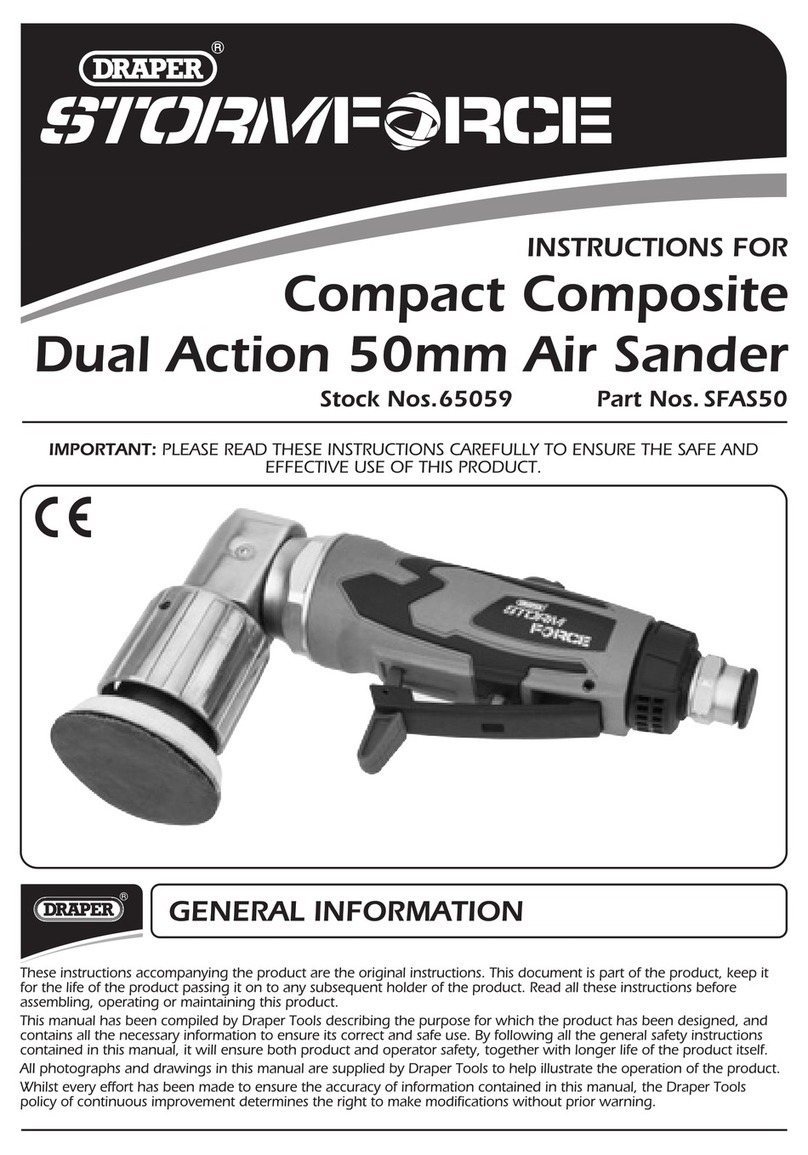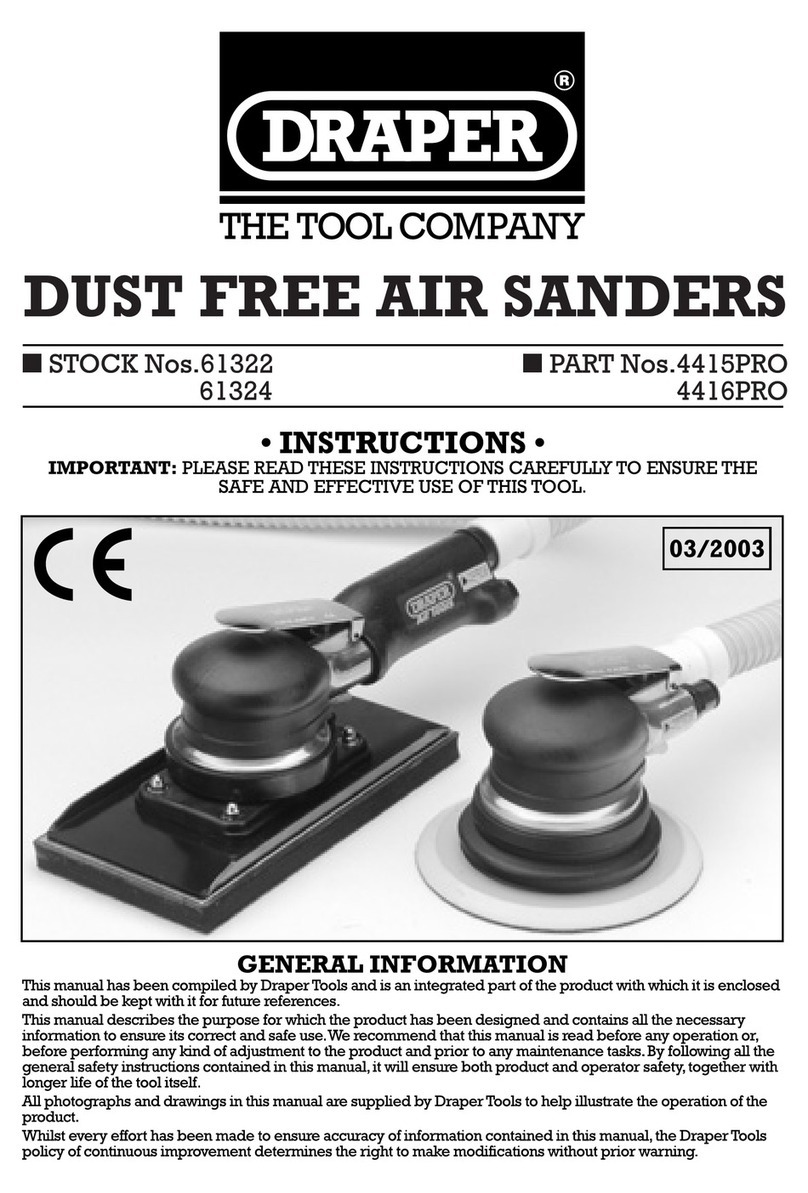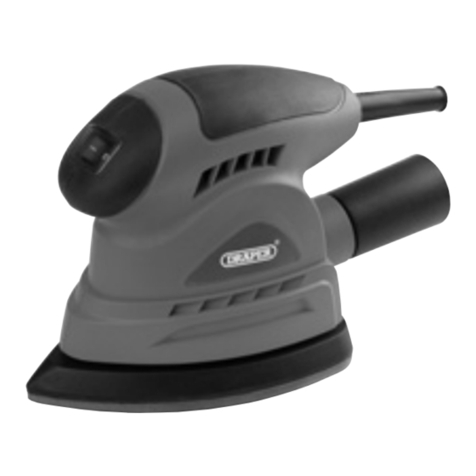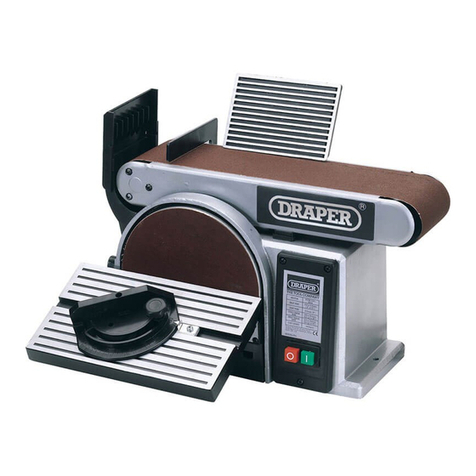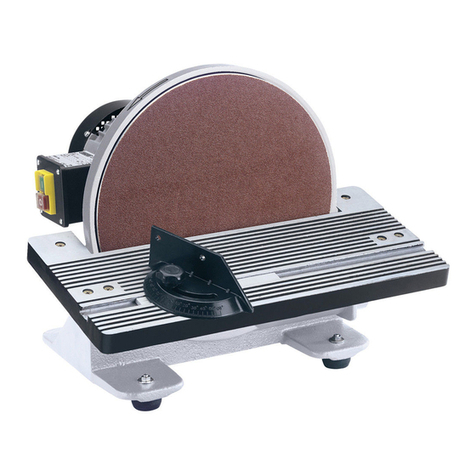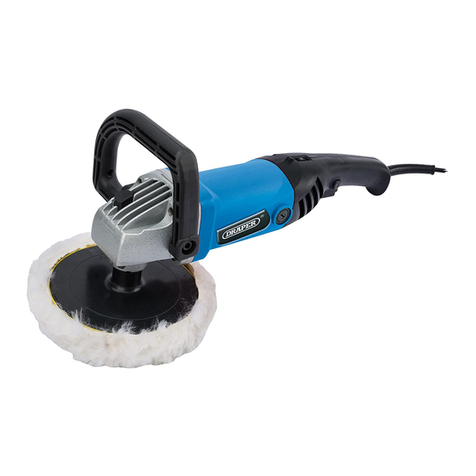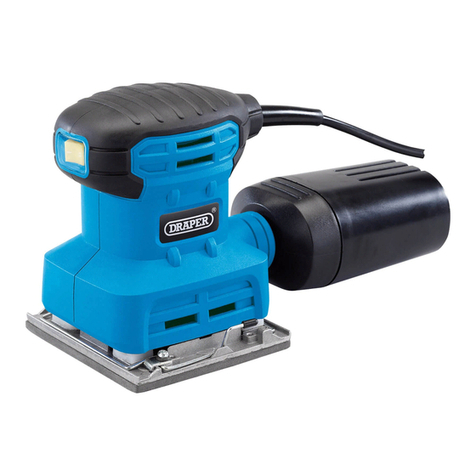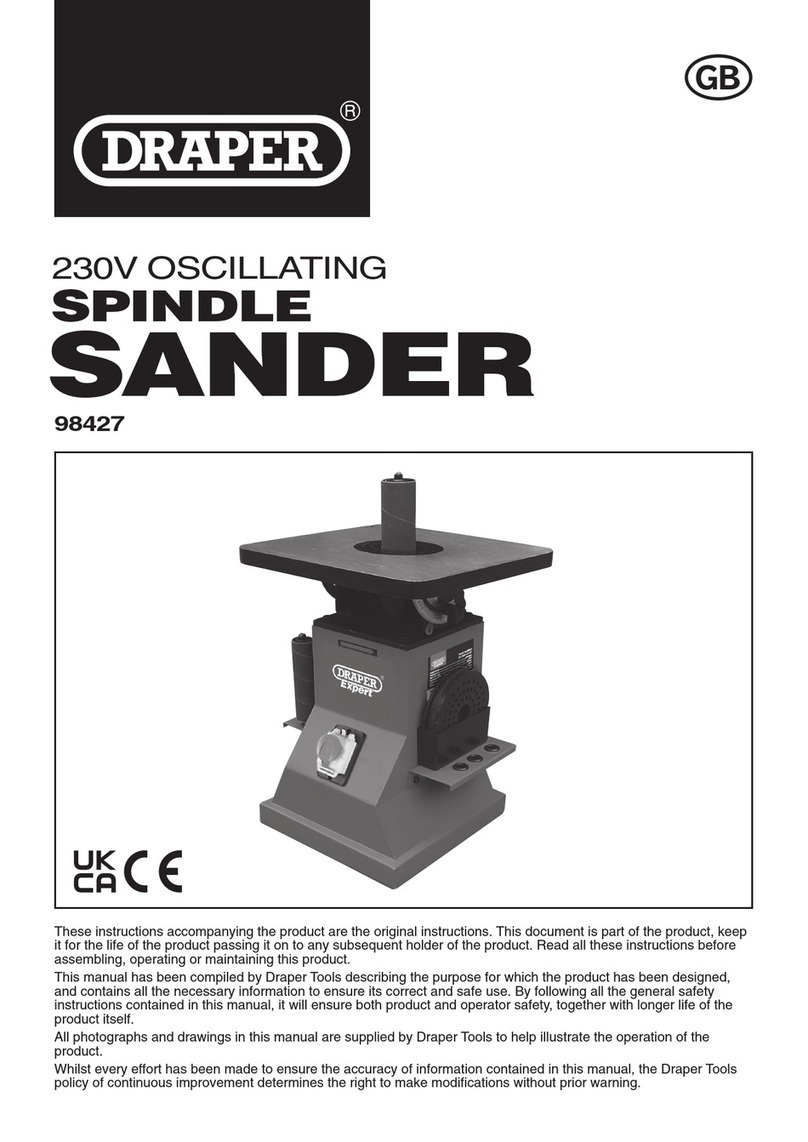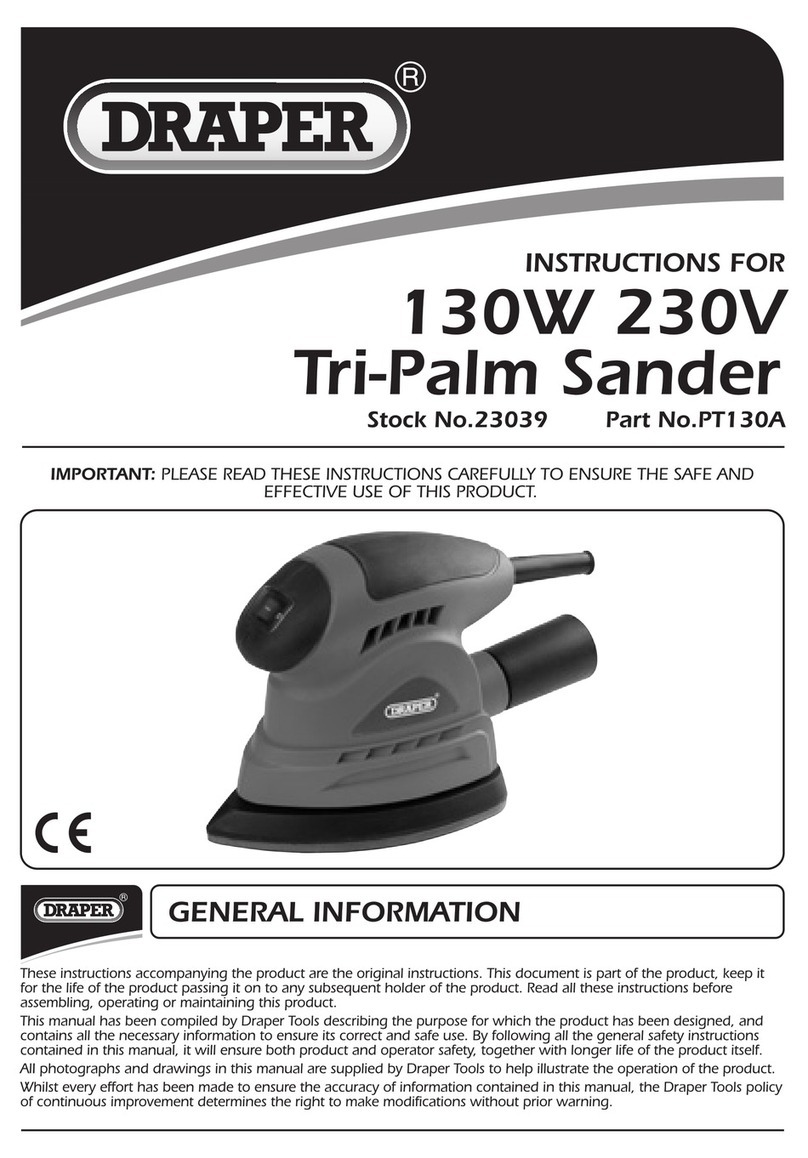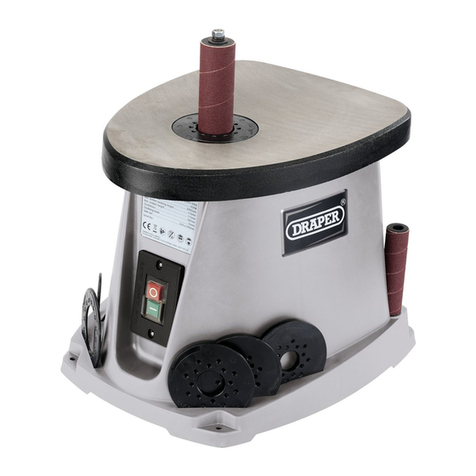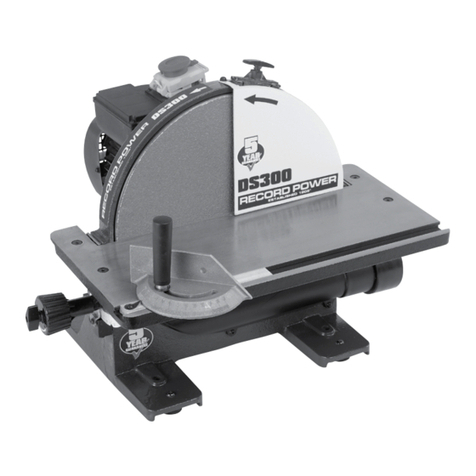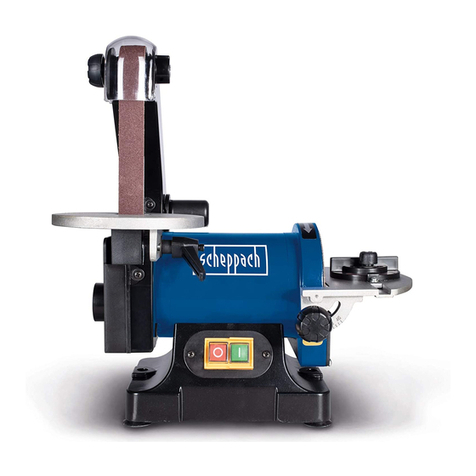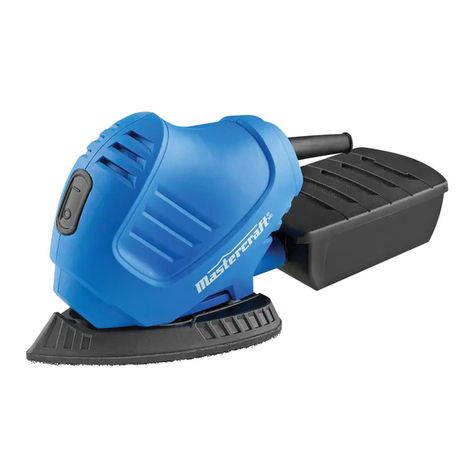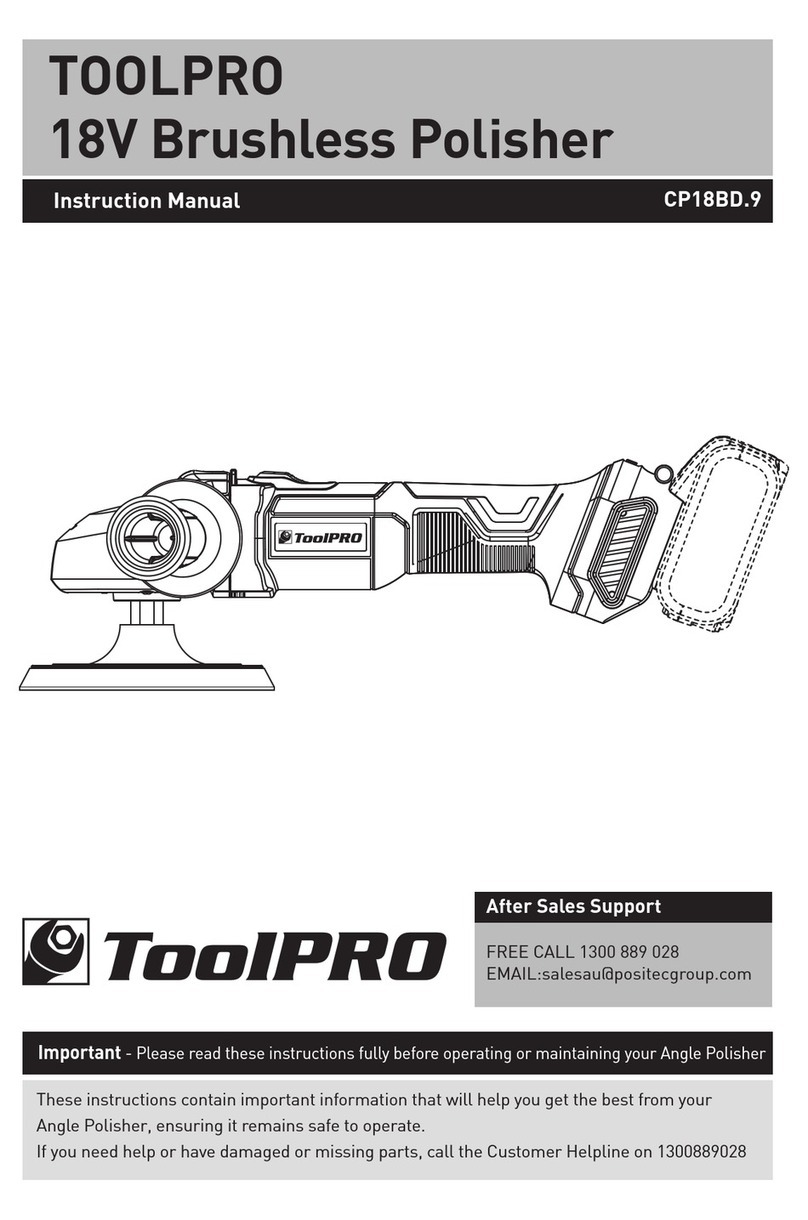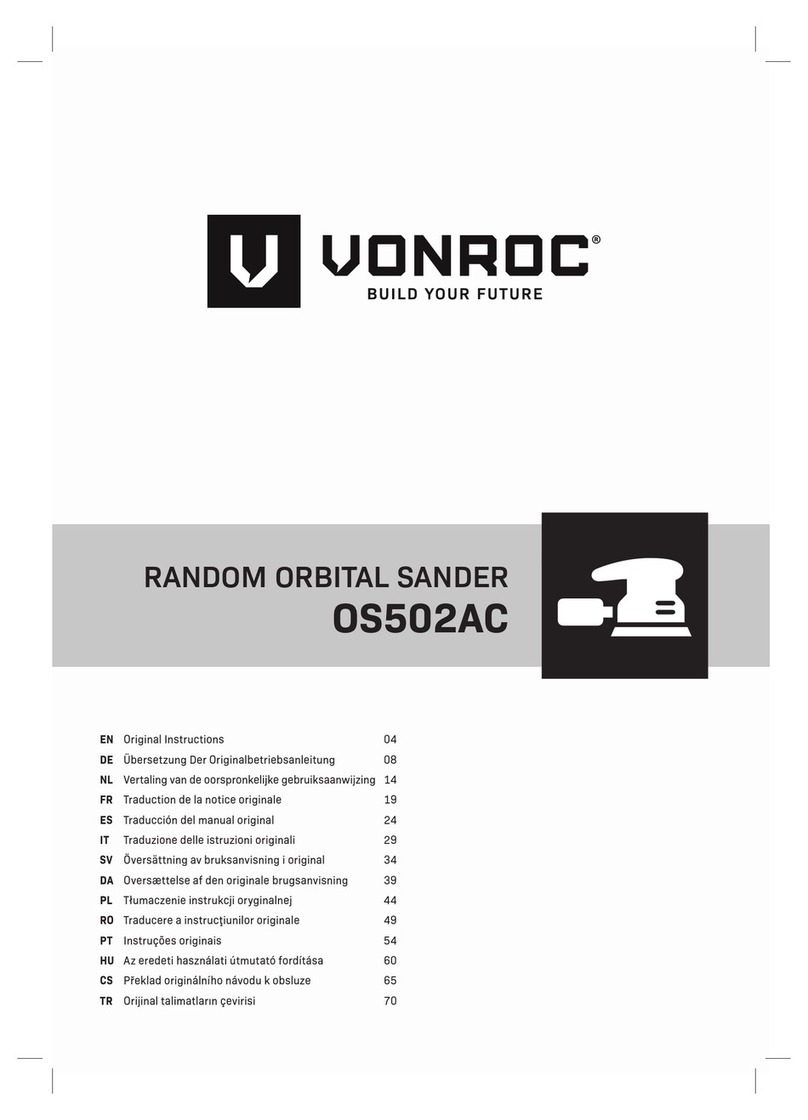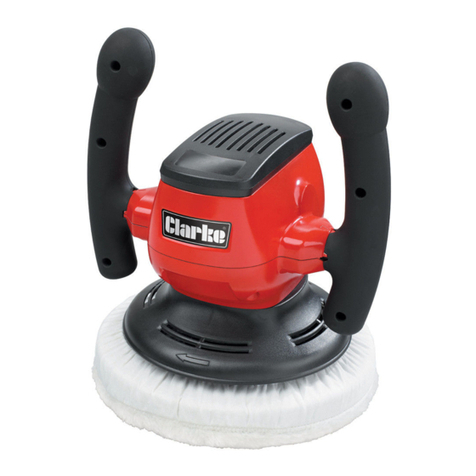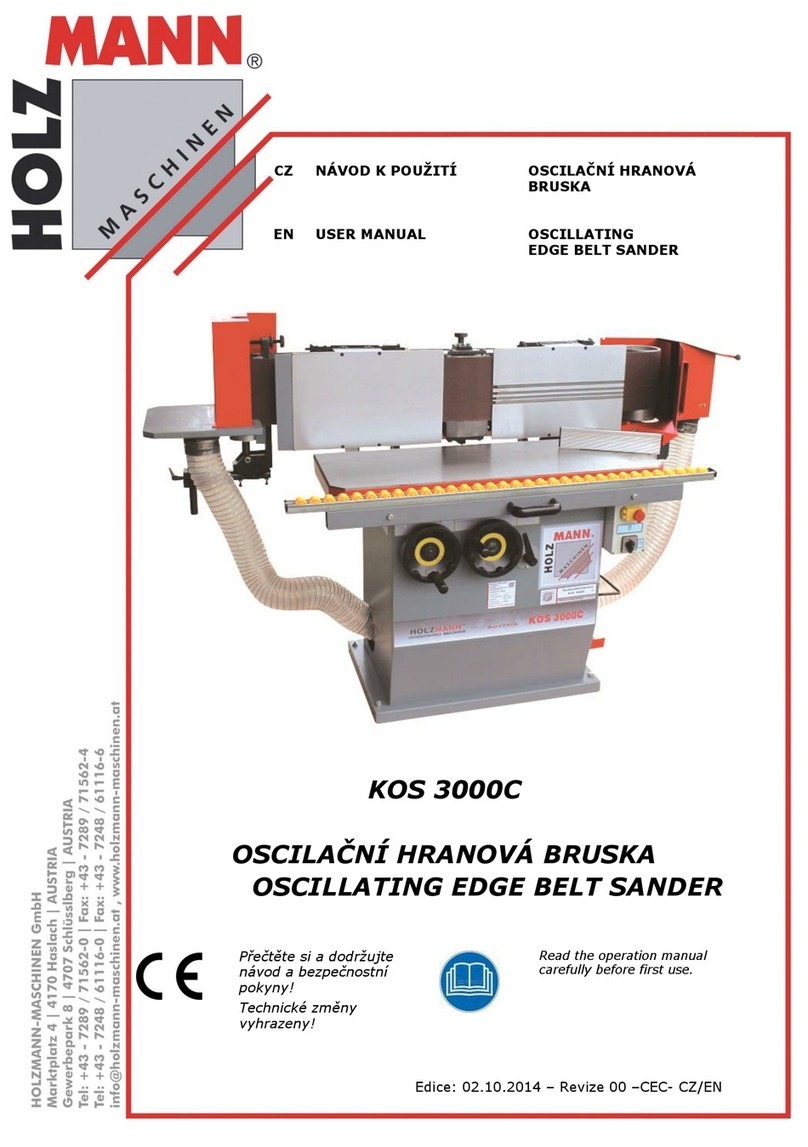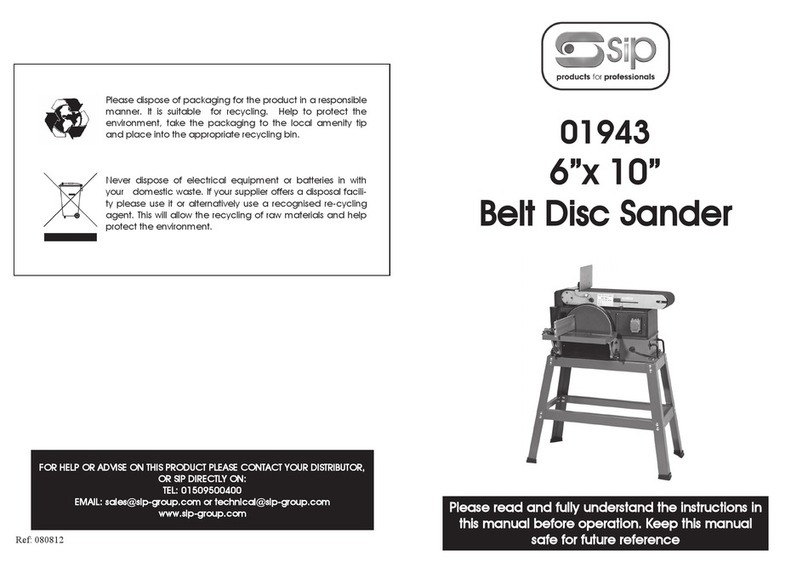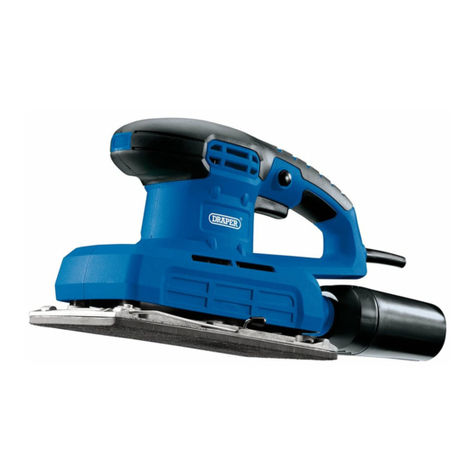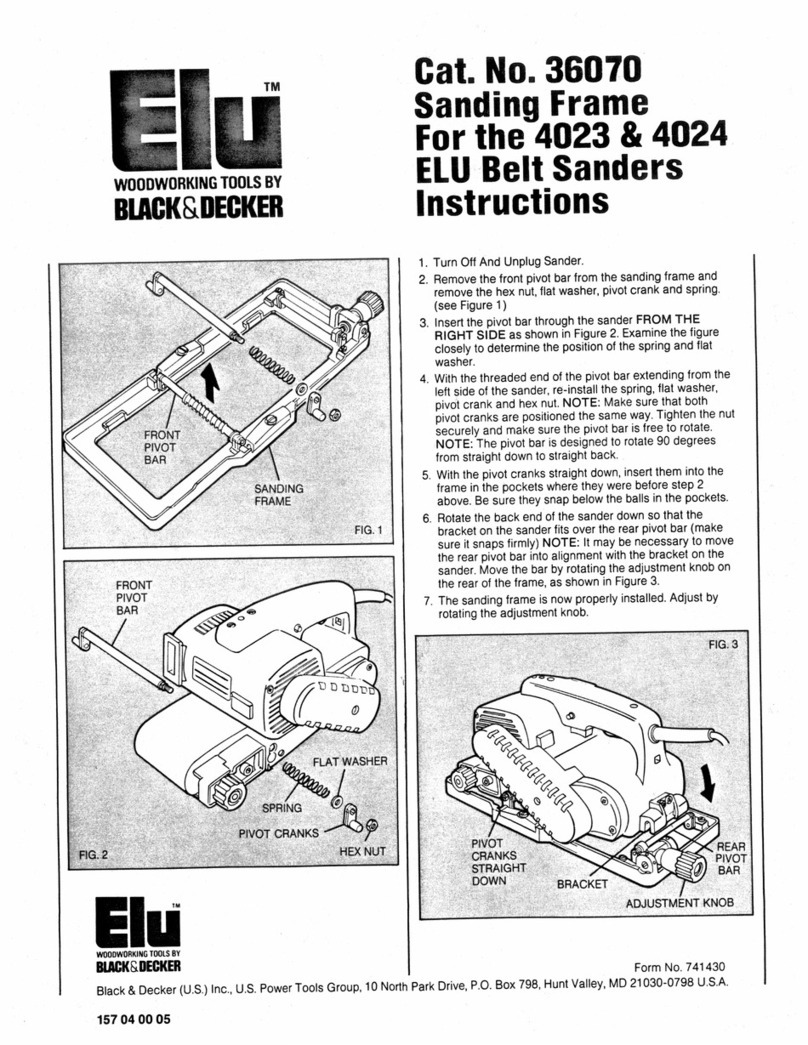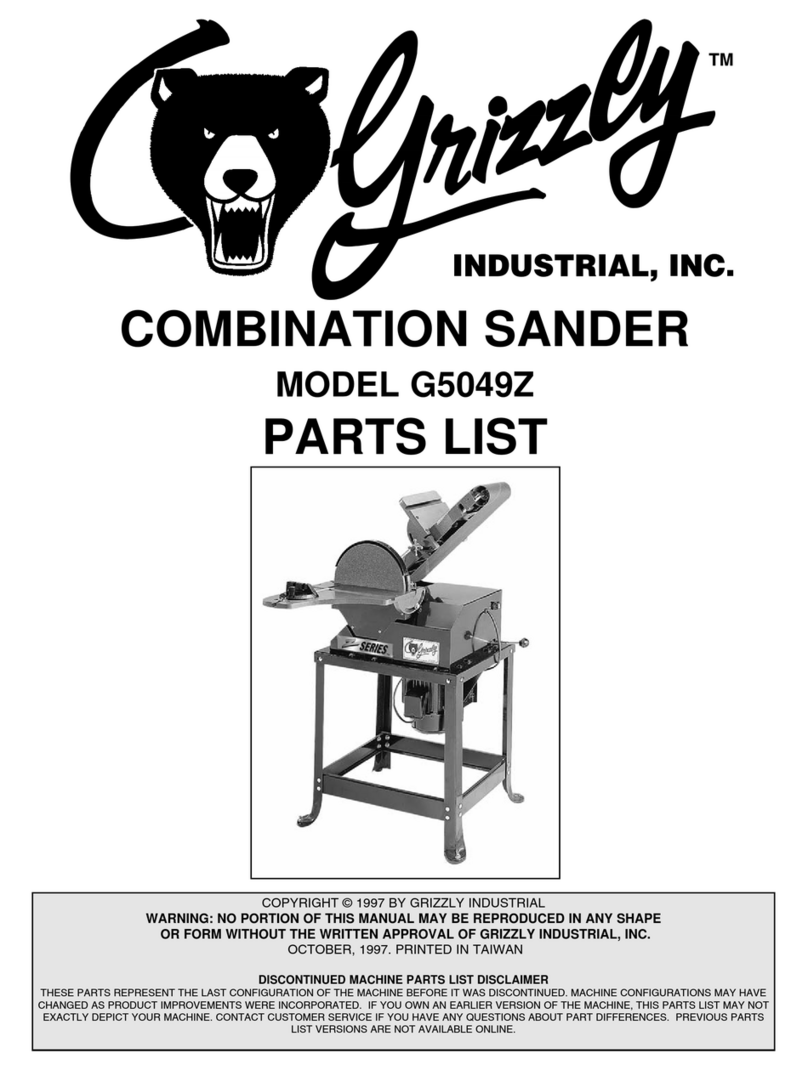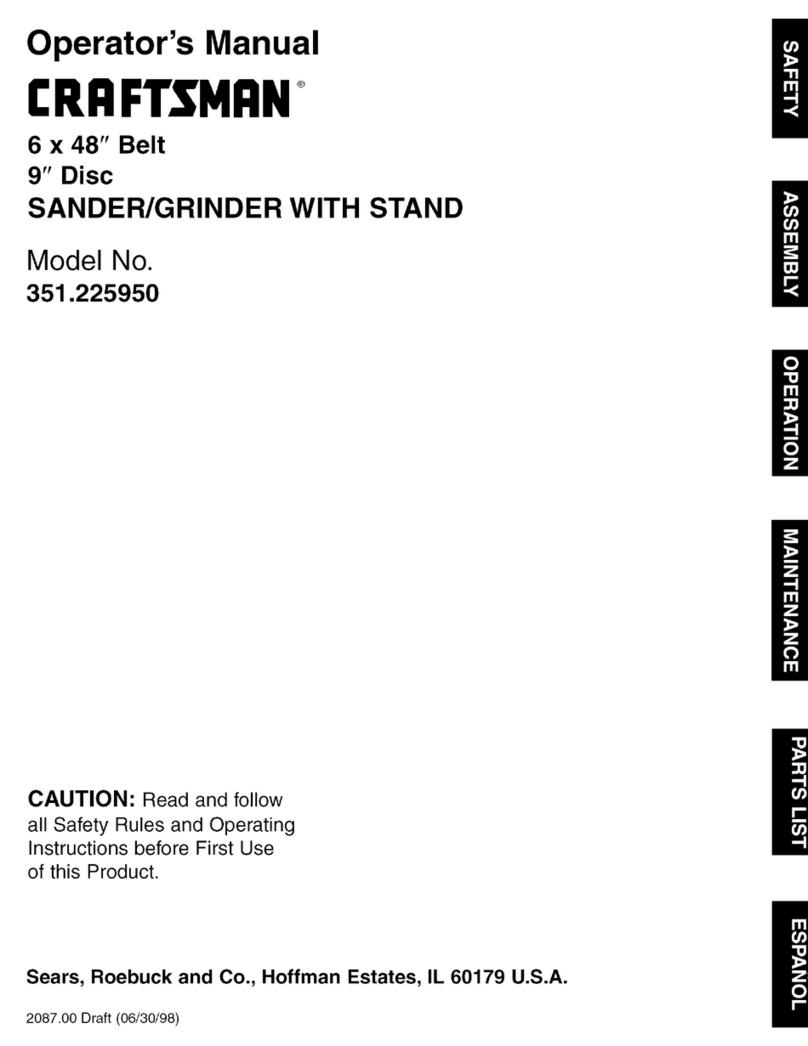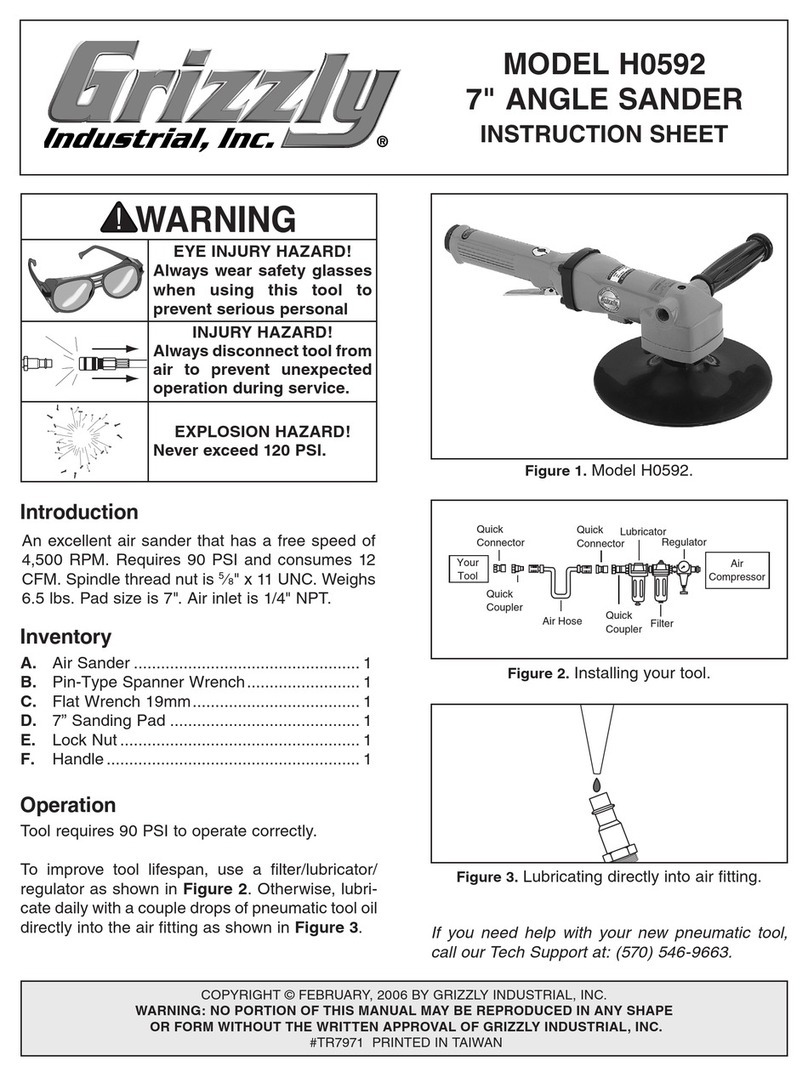
– 6 –
4. Health and Safety Information
Repetitive Motion Hazards
• When operating a sander frequently or for extended
periods, the operator may experience discomfort in
the hands, arms, shoulders, neck and other parts of
the body.
• While using the sander, adopt a comfortable posture
while maintaining secure footing and avoiding
awkward or o-balance positions.
− Change posture and operating positions regularly
during extended use to help avoid discomfort
and fatigue.
• DO NOT ignore symptoms such as persistent or
recurring discomfort, pain, throbbing, aching,
tingling, numbness or burning sensations.
− If these symptoms occur, stop using the tool and
consult a qualied health professional.
Accessory Hazards
• ALWAYS disconnect the sander from the air supply
before tting or changing accessories.
• Avoid direct contact with the sanding pad and
backing plate during and immediately after operation
as it may become hot during use.
• ONLY use accessory types and sizes recommended by
Draper Tools.
• DO NOT attach grinding wheels or cutting-o
accessories to this tool and do not use it for
these purposes.
• ALWAYS ensure that the maximum operating speed
of the backing pad is higher than the rated speed of
the sander.
• Self-xing sander discs must be placed concentrically
on the supporting pad.
Workplace Hazards
• Stay alert for surfaces that may become slippery as a
result of use of this tool and for trip hazards caused by
the air line.
• This sander is not suitable for use in potentially
explosive atmospheres and is not insulated against
contact with electric power.
• Ensure that there are no electrical cables, gas pipes,
etc. present in the workpiece that may cause a hazard
if damaged by the tool.
Dust and Fume Hazards
• Dust and fumes generated by sanding operations can
cause ill health (e.g., cancer, birth defects, asthma
and/or dermatitis).
− Perform a risk assessment and implement any
appropriate controls for identied hazards before
performing any operation.
− Any risk assessment performed must include dust
created by use of the tool and disturbance of any
existing dust.
• Operate and maintain the sander appropriately to
minimise the dust or fume emissions.
• Direct the exhaust so as to minimise disturbance of
existing dust in dusty environments.
• Where dust or fumes are created, priority must be
given to controlling them at the point of emission.
• All integral features and accessories for the collection,
extraction or suppression of airborne dust or fumes
must be correctly used and maintained in accordance
with the manufacturer’s instructions.
• Select, maintain and replace the backing plate and
sanding pads as recommended in the manual to
prevent any unnecessary increase in the emission of
dust or fumes.
• Use appropriate respiratory protection in accordance
with local occupational health and safety regulations.
Noise Hazards
• Exposure to high noise levels can cause permanent
hearing loss and other problems.
− Perform a risk assessment and implement any
appropriate controls for identied hazards before
performing any operation.
• Implement appropriate controls, such as dampening
materials, to prevent the workpiece from “ringing”
during operation.
• Use appropriate hearing protection in accordance
with local occupational health and safety regulations.
• Operate and maintain the sander appropriately to
prevent unnecessary increase in noise emissions.






















